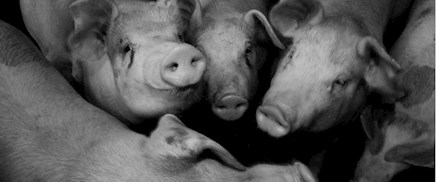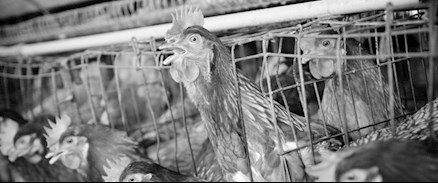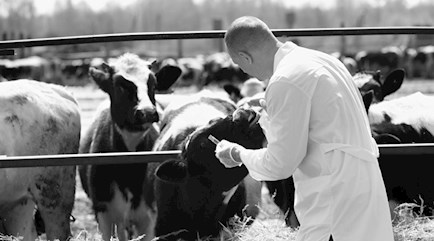Worldwide it is estimated that 70% of all antibiotics are used in farm animals, not people. Much of this use is routine, and enables farm animals, most often pigs and poultry but sometimes also cattle, to be kept in poor conditions where disease spreads easily. Leading authorities such as the European Medicines Agency and the WHO say that the overuse of antibiotics in farming contributes to higher levels of antibiotic resistance in some human infections.
Antibiotics have been used in livestock rearing since the early 1950s. In Europe, antibiotics were originally given to animals to boost their growth. Use of antibiotics for growth promotion was banned throughout the EU in 2006. According to the World Organization for Animal Health, worldwide 109 countries no longer allow growth promotion, but it’s still allowed in at least 36 countries. In Asia and Oceania, farm antibiotic sales per livestock unit are nearly four times higher than in Europe.
Farmers may even use antibiotics classed as 'highest-priority critically important' for humans by the World Health Organisation.
While in human medicine antibiotics are used to cure the sick, in the farming sector these precious resources are often given to groups of healthy animals. In the UK 75% of farm antibiotic use is for group treatments and accross Europe the figure is even higher at 86%. This 'mass-medication' of animals with antibiotics helps stave off diseases in conditions which are often ‘disease-inducing’.
High levels of antibiotic antibiotic use enable the continuation of intensive farming systems, and fuelling the antibiotic resistance crisis in people.
There has been some significant progress in Europe in recent years. Between 2011-2022 sales of antibiotics for livestock fell by 53%. In 2022 the EU brought in new regulations to end the routine use of antibiotics.
In the UK, antibiotic use in livestock has fallen by about 59% since 2014. New UK regulations on farm antibiotic use came into force on 17 July 2024. These are based on EU regulations, and include a ban on routine use. Unfortunately, the UK has not banned prophylactic group treatments or introduced statutory antibiotic-use data collection, as the EU has done.
Animals do not need routine antibiotics to stay healthy. Organic and higher welfare systems use antibiotics sparingly, and only when animals need it. Livestock should - and can - be kept healthy through good husbandry and welfare, rather than through ‘bought-in’ immunity.
Overwhelming evidence shows that animals are more susceptible to disease when stressed. Stress releases hormones such as cortisol in animals, which can reduce immunity by compromising the immune system. In intensive systems, animals are often bred for maximum yield, rather than for natural disease resistance and robustness.

Pigs in intensive, indoor systems can receive antibiotics throughout their lives. Piglets are often given antibiotics preventatively at weaning, which occurs usually at three or four weeks, when pigs will often be mixed and develop post-weaning diarrhoea.
Research shows that early weaned piglets are more likely to suffer from diarrhoea as their ‘intestinal barrier function’ against pathogens is disrupted. Moving to later weaning would reduce the incidence of diarrhoea, which is a major cause of the high levels of antibiotic use in weaners. Organic pig farms wean piglets later, and use much lower levels of antibiotics.

Antibiotics are commonly used in the poultry industry for the treatment and prevention of respiratory diseases and other bacterial infections.
There have been significant reductions by the UK poultry industry to overall use of antibiotics in recent years; but poultry farmers continue to use the fluoroquinolones - a class of antibiotics important for treating serious human Campylobacter infections. These may be added to the drinking water of a flock, even when no disease is present in most birds.
Countries including the US, Australia, Denmark and Sweden do not use fluoroquinolones in poultry due to fears around human resistance. The Alliance is calling for a ban to use of these drugs in poultry in the UK.

Antibiotics are commonly used in the dairy sector for ‘dry cow therapy’. This involves infusing antibiotics into the udder to prevent the occurrence of mastitis during the ‘dry’ period. Dry cow therapy is often used across all cows as a purely preventative measure – even when there are no signs of disease present.
Research has shown that 85% of non-organic farms used routine, non-selective dry cow therapy in all their cows.
Back to The Issue